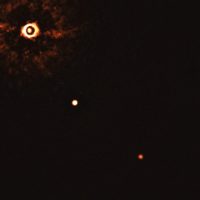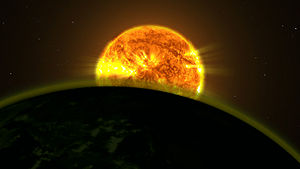An exoplanet is a planet orbiting stars beyond our Solar System. While the existence of exoplanets was theorized as far back as the 1500s when Italian philosopher Giordano Bruno suggested space was filled by “an infinity of worlds of the same kind as our own” the first discovery of an exoplanet wasn’t made until the 1990’s
Since the discovery of the exoplanet 51 Peg b in 1995, astronomers have discovered thousands of planets around nearby stars (http://exoplanets.org/) using a variety of observational techniques. The demographics of these planets (mass, orbital period, ) and observations of circumstellar disks have helped to constrain the processes by which exoplanetary systems form and evolve. NASA will launch its next flagship observatory, the James Webb Space Telescope (JWST), in December 2021. Dr. Christine Chen will provide an overview of the field of exoplanets and disks and describe planned observations for the first year of JWST operations.
Dr. Christine Chen is currently a member of the Science Mission Office (SMO) and the JWST Science Policy Group (SPG) Lead. Her research has centered on using multi-wavelength observations to elucidate the properties of dust in debris disks (grain size, porosity, shape and composition). Debris disks are exoplanetary systems that contain not only planets but also minor body belts, analogous to the asteroid and Kuiper Belts in our Solar System. Detailed characterization of the constituent dust can shed light on how exoplanetary systems form and evolve. Dr. Chen is currently leading an international team of astronomers using the Gemini Planet Imager on the Gemini South Telescope to better characterize the star light reflected from debris dust. She is a member of the JWST Mid Infrared Instrument (MIRI) Guaranteed Time Observer (GTO) Team.

This image, captured by the SPHERE instrument on ESO’s Very Large Telescope, shows the star TYC 8998-760-1 accompanied by two giant exoplanets. This is the first time astronomers have directly observed more than one planet orbiting a star similar to the Sun.
The image was captured by blocking the light from the young, Sun-like star (on the top left corner) using a coronagraph, which allows for the fainter planets to be detected. The bright and dark rings we see on the star’s image are optical artefacts. The two planets are visible as two bright dots in the centre and bottom right of the frame.

